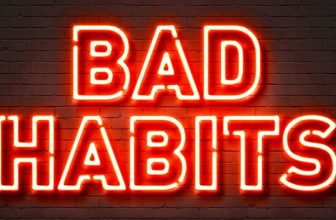
A foam roller is a compressed foam cylinder mostly used to increase flexibility and reduce muscle tightness and work through inflammation. Foam rolling is a self-applied exercise that reproduces a deep tissue massage. Using a foam roller before a workout increases flexibility, allowing you to get deeper into your movements during your training session. Post-workout, it helps break down any scarred tissue or difficult-to-reach areas of the muscles increasing blood flow to the area for quicker recovery, improved mobility and performance. Read on for Foam Rolling: 5 Simple & Effective Exercises!
1. Hamstrings
These are the group of muscles at the back of the upper leg. They’re used in all every-day activities and are very prone to tightness. Foam rolling can really help to relax the hamstrings. The best way to do it is to sit on the floor with one leg straight and the other bent, placing the foam roller under the thigh of the straight leg and placing your hand on the floor behind you to stabilise yourself. Slide forward and backward the whole length of the thigh.
2. Calves
The muscles situated at the back of the lower leg. The calves are stressed during many exercises like running, squatting, walking, cycling and skipping rope, and their tightness can result in a possible malfunction of the ankles, feet and knees. The foam rolling exercise to target the calves is similar to the one for the hamstrings, with the roller positioned below the knee – slide all the way down to the ankle and then back.
3. Glutes
This muscle group is incredibly important, and their mobility can be affected by pain or tightness in other parts of the body like the legs, lower back and hips. You can stretch the glutes with a foam roller by sitting on it on one side and crossing the leg of the same side onto the other one, which is bent with the foot on the floor. Tilting slightly toward the outside, roll up and down the length of the glutes.
4. Upper (Thoracic) Spine
This is the longest part of the spine, from the base of the neck to the abdomen. It’s important to stretch it because this is where most of the back tension is accumulated. Lying on your back with your legs bent, position the foam roller under your shoulder blades and cross your arms on your chest. Gently extend your arms above your head and back keeping the foam roller still.
5. Lats
They connect the arms to the spine and they’re the biggest muscles of the upper body. Tightness in this area can affect your shoulder’s mobility and strength. To stretch the lats with a foam roller, simply lay on one side, position the roller beneath your armpit, extend the arm straight and slowly roll up and down the area.








